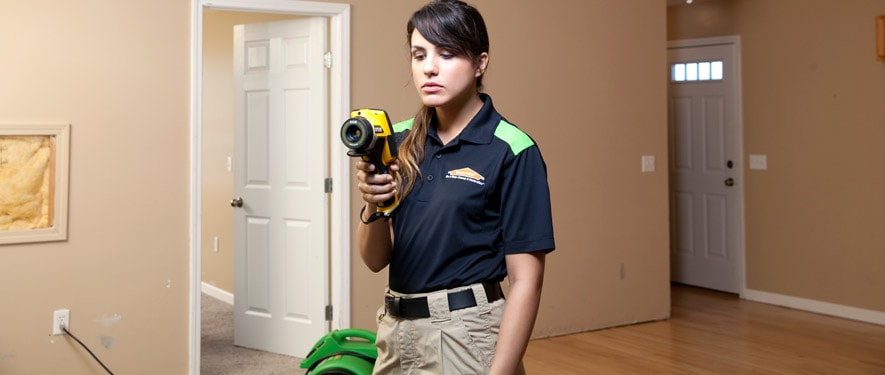
Step 2: Inspection and Water Damage Assessment
Our Water Damage Restoration Process
Our water damage restoration process begins with a detailed inspection and damage assessment to understand the extent of the damage and create a suitable plan. We promptly identify and stop the water source to prevent further damage. Categorizing the water damage helps us determine the appropriate restoration procedures based on industry guidelines.
Thoroughly surveying the affected areas allows us to assess the moisture's reach and identify any safety concerns. We prioritize the safety of your property and inspect for hazards such as lead or asbestos. Additionally, we take precautions to protect your furniture and belongings from further damage by carefully moving and blocking items.
With our systematic approach, we ensure a comprehensive restoration process. In case of a water emergency, contact us immediately, and we will swiftly proceed to the next step: water removal and extraction.
Identify and Stop the Water Source
We will check for the source of moisture in your home or business. The source must be stopped before any restoration or drying of the building can be successful.
- Stop the Source
- Check for Contaminated Water
Identify the Type of Water
We will identify the category and classification of water damage to ensure our professionals restore your property based on industry guidelines. The level of contamination of the water will affect the specific restoration processes we use.
- Category 1: "Clean Water"
- Category 2: "Gray Water"
- Category 3: "Black Water"
Survey the Extent of the Water Damage and Inspect the Premises
We inspect and test to determine the extent of damage and how far the moisture has traveled to ensure proper and complete restoration. In addition, we will inspect for safety concerns that may be evident. If there are any safety issues like lead or asbestos, please bring them to our attention.
- Survey Damage
- Complete Safety Inspection
Move or Block Furniture
We move furniture and property contents and block items to help prevent rust or furniture stains on wet carpet.
- Block Furniture






 24/7 Emergency Service
24/7 Emergency Service


